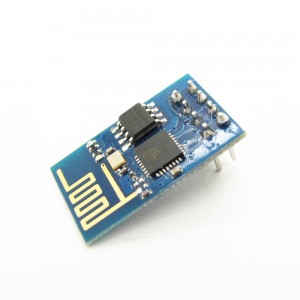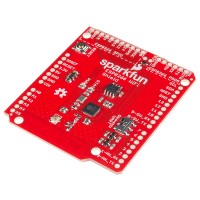Attention: we've offered several demos for ESP8266, please visit its github to download.
ESP8266 offers a complete and self-contained Wi-Fi networking solution, allowing it to either host the application or to offload all Wi-Fi networking functions from another application processor.
When ESP8266 hosts the application, and when it is the only application processor in the device, it is able to boot up directly from an external flash. It has integrated cache to improve the performance of the system in such applications, and to minimize the memory requirements.
Alternately, serving as a Wi-Fi adapter, wireless internet access can be added to any microcontroller-based design with simple connectivity through UART interface or the CPU AHB bridge interface.
ESP8266 on-board processing and storage capabilities allow it to be integrated with the sensors and other application specific devices through its GPIOs with minimal development up-front and minimal loading during runtime. With its high degree of on-chip integration, which includes the antenna switch balun, power management converters, it requires minimal external circuitry, and the entire solution, including front-end module, is designed to occupy minimal PCB area.
Sophisticated system-level features include fast sleep/wake context switching for energy-efficient VoIP, adaptive radio biasing for low-power operation, advance signal processing, and spur cancellation and radio co-existence features for common cellular, Bluetooth, DDR, LVDS, LCD interference mitigation.
Features
- 802.11 b/g/n protocol
- Wi-Fi Direct (P2P), soft-AP
- Integrated TCP/IP protocol stack
- Integrated TR switch, balun, LNA, power amplifier and matching network
- Integrated PLL, regulators, and power management units
- +19.5dBm output power in 802.11b mode
- Integrated temperature sensor
- Supports antenna diversity
- Power down leakage current of < 10uA
- Integrated low power 32-bit CPU could be used as application processor
- SDIO 2.0, SPI, UART
- STBC, 1×1 MIMO, 2×1 MIMO
- A-MPDU & A-MSDU aggregation & 0.4s guard interval
- Wake up and transmit packets in < 2ms
- Standby power consumption of < 1.0mW (DTIM3)
Electronic Characteristics
1. Current Consumption
The following current consumption is based on 3.3V supply, and 25℃ ambient, using internal regulators. Measurements are done at antenna port without SAW filter. All the transmitter’s measurements are based on 90% duty cycle, continuous transmit mode.
| Mode | Min | Typ | Max | Unit |
| Transmit 802.11b, CCK 1Mbps, POUT=+19.5dBm | 215 | mA | ||
| Transmit 802.11b, CCK 11Mbps, POUT=+18.5dBm | 197 | mA | ||
| Transmit 802.11g, OFDM 54Mbps, POUT =+16dBm | 145 | mA | ||
| Transmit 802.11n, MCS7, POUT=+14dBm | 135 | mA | ||
| Receive 802.11b, packet length=1024 byte, -80dBm | 60 | mA | ||
| Receive 802.11g, packet length=1024 byte, -70dBm | 60 | mA | ||
| Receive 802.11n, packet length=1024 byte, -65dBm | 62 | mA | ||
| Standby | 0.9 | mA | ||
| Deep sleep | 10 | uA | ||
| Power save mode DTIM 1 | 1.2 | mA | ||
| Power save mode DTIM 3 | 0.86 | mA | ||
| Total shutdown | 0.5 | uA |
| Description | Min | Typical | Max | Unit |
| Input frequency | 2412 | 2484 | MHz | |
| Input impedance | 50 | Ω | ||
| Input reflection | -10 | dB | ||
| Output power of PA for 72.2Mbps | 14 | 15 | 16 | dBm |
| Output power of PA for 11b mode | 17.5 | 18.5 | 19.5 | dBm |
| Sensitivity | ||||
| CCK, 1Mbps | -98 | dBm | ||
| CCK, 11Mbps | -91 | dBm | ||
| 6Mbps (1/2 BPSK) | -93 | dBm | ||
| 54Mbps (3/4 64-QAM) | -75 | dBm | ||
| HT20, MCS7 (65Mbps, 72.2Mbps) | -71 | dBm |
Documents
Support








